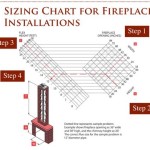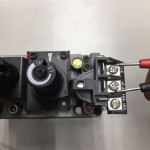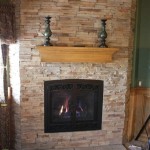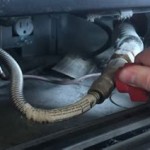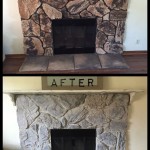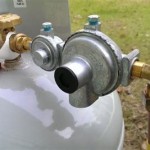Wood-Burning Fireplace Heat Exchanger: Harnessing the Power of Fire
A wood-burning fireplace can be a charming and cozy addition to a home, offering the warmth and ambiance of a traditional hearth. But, while aesthetically pleasing, traditional fireplaces can be inefficient, releasing a significant portion of heat directly up the chimney, leaving the room feeling cool. This is where a wood-burning fireplace heat exchanger comes in, offering a solution to harness the heat produced by the fire and distribute it throughout the living space.
A heat exchanger is an essential component in maximizing the efficiency of a wood-burning fireplace. It functions by transferring heat from the hot combustion gases inside the fireplace to the surrounding air, effectively increasing the amount of heat available for heating the room. This transfer occurs through a series of metal fins or tubes, allowing the heat to be absorbed by the air circulating around them. The warm air is then distributed throughout the home using a blower system.
Key Benefits of a Wood-Burning Fireplace Heat Exchanger
The installation of a wood-burning fireplace heat exchanger provides several significant benefits, enhancing the overall heating efficiency and comfort of your home.
Increased Heating Efficiency
The primary advantage of a heat exchanger is its ability to significantly increase the heating efficiency of a wood-burning fireplace. By capturing and transferring the heat from the combustion gases, it prevents a substantial amount of heat from escaping directly up the chimney. This results in a warmer room and a more efficient use of the wood fuel.
Cost Savings
With improved heating efficiency, a heat exchanger can help reduce your home's heating costs. By utilizing the heat generated from the fireplace more effectively, you can decrease your reliance on traditional heating systems, leading to lower energy bills. The savings can be substantial, especially during colder months when fireplace usage is higher.
Enhanced Comfort
A wood-burning fireplace heat exchanger offers enhanced comfort by distributing warm air throughout the room and even to other areas of the house. This allows for a more evenly heated space, eliminating cold spots and ensuring a comfortable temperature throughout. The consistent warmth generated by a heat exchanger can create a cozy and inviting atmosphere, making your fireplace even more enjoyable.
Types of Wood-Burning Fireplace Heat Exchangers
There are various types of heat exchangers available, each with its own design and features. Understanding these options can help you choose the best solution for your fireplace and heating needs.
Direct Vent Heat Exchangers
Direct vent heat exchangers draw in fresh air from outside and use it to heat the room, ensuring a clean and efficient combustion process. They are suitable for homes with limited airflow and vent directly outside, offering a more controlled and efficient system.
Indirect Vent Heat Exchangers
Indirect vent heat exchangers utilize existing ductwork to circulate warm air throughout the house. They are well-suited for homes with existing ductwork and can be integrated into the existing heating system. These exchangers offer flexibility and connectivity, allowing you to distribute warmth to multiple rooms.
Considerations for Choosing a Wood-Burning Fireplace Heat Exchanger
When choosing a wood-burning fireplace heat exchanger, several considerations are crucial to ensure optimal performance and suitability for your home.
Size and Capacity
The size and capacity of the heat exchanger should be appropriate for the size of your fireplace and the space you wish to heat. It is important to consult with a fireplace professional to determine the suitable size and capacity for your specific needs.
Installation Requirements
The installation process varies depending on the type of heat exchanger you choose. It is essential to ensure your fireplace and ductwork can accommodate the installation and that you have sufficient airflow.
Maintenance Requirements
Regular maintenance is crucial for maximizing the efficiency and longevity of your heat exchanger. This may include cleaning the unit, inspecting the components, and ensuring proper airflow. Consult the manufacturer's recommendations for specific maintenance schedules.
Conclusion
A wood-burning fireplace heat exchanger can be a valuable investment, offering enhanced comfort and heating efficiency. Carefully considering the different types of heat exchangers and consulting with a fireplace professional can help you choose the best solution that meets your needs. With proper installation and maintenance, you can enjoy the warmth and ambiance of a traditional fireplace while maximizing its benefits for your home.

Fireplace As Heatingsystem Called Thermo Exclusive Property Blog

Size 45 Airculator Wood Burning Fireplace Heat Exchanger

Size 39 Airculator Wood Burning Fireplace Heat Exchanger

Grate Heater Wikipedia

Stove With Heat Exchanger On The Flue Looks A Bit Mad To Me Wood Water Heater

Majestic Sovereign Heat Circulating Wood Burning Fireplace Woodland Direct

Fire Place Heat Exchanger Fireplace Blower

Size 45 Airculator Wood Burning Fireplace Heat Exchanger

Fireplace Wood Burning Airculator 45 20k Btu S Heat Exchanger Blower He14501

Size 45 Airculator Wood Burning Fireplace Heat Exchanger

